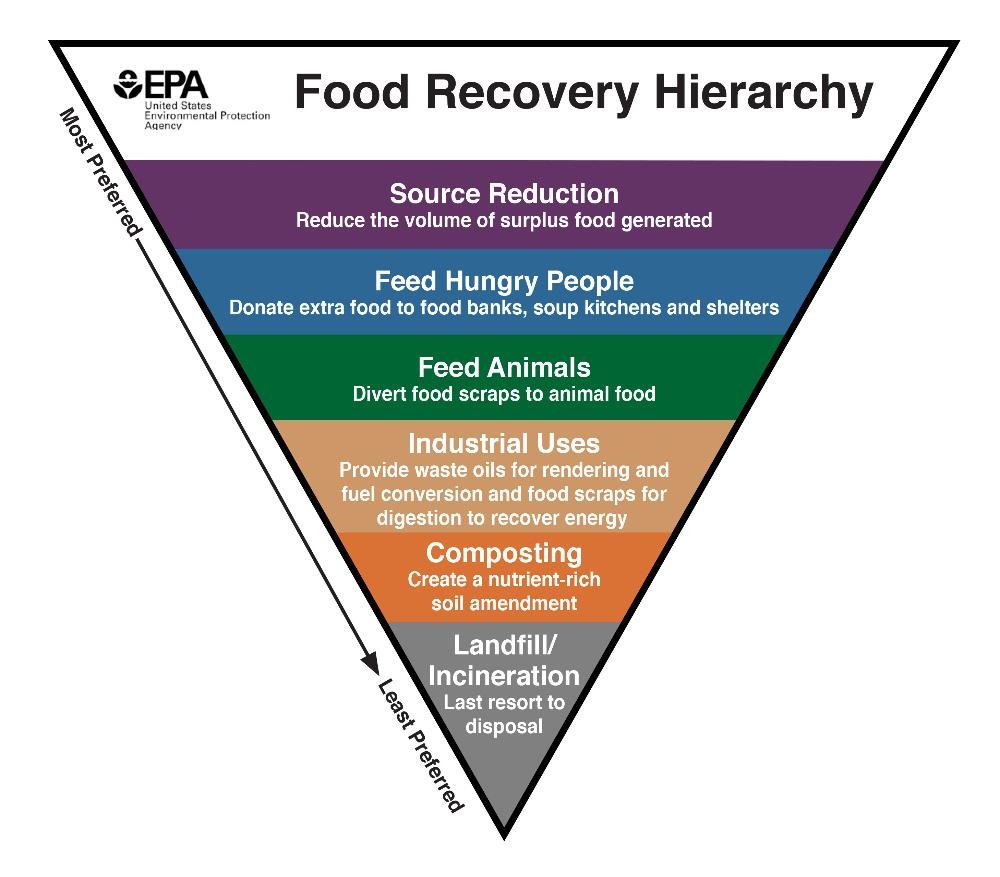Did you know the U.S. discards more food than any other country in the world: nearly 80 billion pounds every year? Wasting food has serious environmental and economical repercussions, as well as far-reaching impacts on our society. Learning the difference between Food Waste and Wasted Food is a first step understanding this important issue.
Food Waste or “food scraps” primarily consists of organic material discarded during the preparation or cooking of food. For example, food trimmings such as the fat off meats and the nonedible parts of foods like watermelon rinds, banana peels, and peanut shells. Food Waste also includes leftover or partially consumed foods such as pizza crusts or apple cores. Items that are no longer safe for humans to eat, such as moldy bread or spoiled milk, are classified as food waste as well. Most food waste maintains the potential to be composted when separated from the garbage stream.
On the other hand, Wasted Food generally refers to food fit for human consumption but goes to waste before it can be eaten. Estimates are that 14% of all food produced globally never makes it to consumers. This loss can occur during the processing, transporting, preparing, and storing of food from field to market. However, by far the greatest amount of Wasted Food comes from our own kitchens in the form of food spoilage resulting from buying more food than needed. Other Wasted Food includes lower-grade produce such as bruised peaches or unusally shaped (“ugly”) vegetables that go uneaten. Also, packaged food past their sell dates and excess prepared foods are indentified as Wasted Food. Much of this Wasted Food could be diverted to help feed needy families or put to better uses rather than sent to landfills.
 The EPA Food Recovery Hierarchy prioritizes actions organizations can take to prevent and divert wasted food. Each tier of the Food Recovery Hierarchy focuses on different management strategies for your wasted food.
The EPA Food Recovery Hierarchy prioritizes actions organizations can take to prevent and divert wasted food. Each tier of the Food Recovery Hierarchy focuses on different management strategies for your wasted food.
The top levels of the hierarchy are the best ways to prevent and divert wasted food because they create the most benefits for the environment, society and the economy. To learn more about the tiers of the hierarchy, visit EPA.
Below is a list of local food banks accepting shelf-stable food items. Please be sure to call ahead to find out donation hours and procedures.
- Bread of the Mighty Food Bank, 325 NW 10th Ave., Gainesville, FL 32601, (352) 336-0839
- Gainesville Community Ministry, 238 SW 4th Ave., Gainesville, FL 32601, (352) 372-8162
- Hitchcock Field & Fork Food Pantry (on UF campus), 564 Newell Dr., Gainesville, FL 32603, (352) 294-3601
- Gainesville Harvest, 904 NW 4th St., Gainesville, FL 32601, (352) 378-3663
- Salvation Army, 639 E University Ave, Gainesville, FL 32601, (352) 376-1743
- Catholic Charities Bureau,1701 NE 9th St., Gainesville, FL 32609, (352) 372-0294